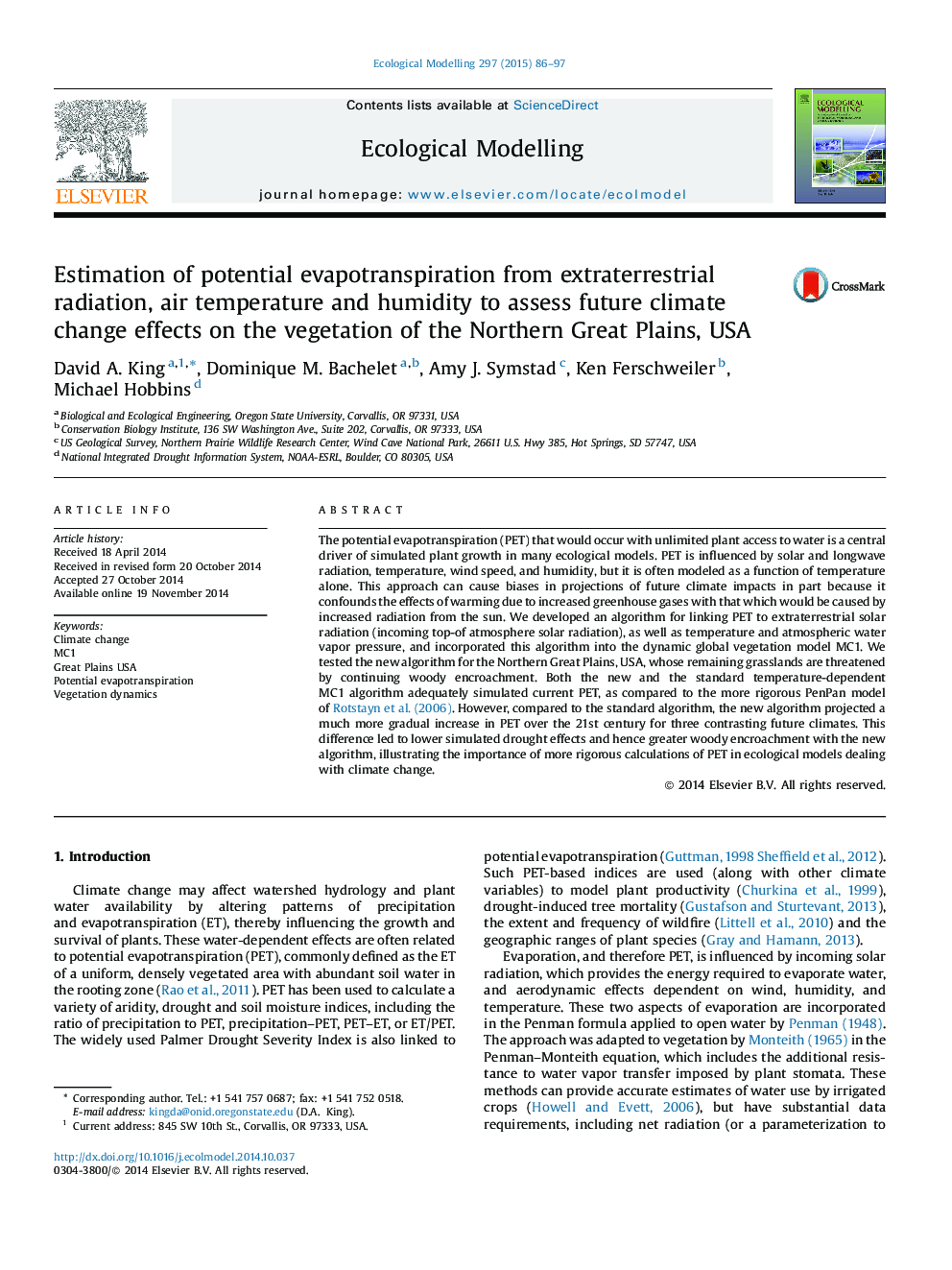| کد مقاله | کد نشریه | سال انتشار | مقاله انگلیسی | نسخه تمام متن |
|---|---|---|---|---|
| 4375819 | 1617449 | 2015 | 12 صفحه PDF | دانلود رایگان |
• Use of temperature alone can bias estimates of potential evapotranspiration (PET).
• We developed an algorithm linking PET to extraterrestrial radiation and temperature.
• This new algorithm approximated the historical PET of a temperature-based algorithm.
• But the new algorithm projected a more gradual increase in future PET.
• Hence, lower drought effects and greater woody encroachment of grasslands were projected with the new algorithm.
The potential evapotranspiration (PET) that would occur with unlimited plant access to water is a central driver of simulated plant growth in many ecological models. PET is influenced by solar and longwave radiation, temperature, wind speed, and humidity, but it is often modeled as a function of temperature alone. This approach can cause biases in projections of future climate impacts in part because it confounds the effects of warming due to increased greenhouse gases with that which would be caused by increased radiation from the sun. We developed an algorithm for linking PET to extraterrestrial solar radiation (incoming top-of atmosphere solar radiation), as well as temperature and atmospheric water vapor pressure, and incorporated this algorithm into the dynamic global vegetation model MC1. We tested the new algorithm for the Northern Great Plains, USA, whose remaining grasslands are threatened by continuing woody encroachment. Both the new and the standard temperature-dependent MC1 algorithm adequately simulated current PET, as compared to the more rigorous PenPan model of Rotstayn et al. (2006). However, compared to the standard algorithm, the new algorithm projected a much more gradual increase in PET over the 21st century for three contrasting future climates. This difference led to lower simulated drought effects and hence greater woody encroachment with the new algorithm, illustrating the importance of more rigorous calculations of PET in ecological models dealing with climate change.
Journal: Ecological Modelling - Volume 297, 10 February 2015, Pages 86–97
